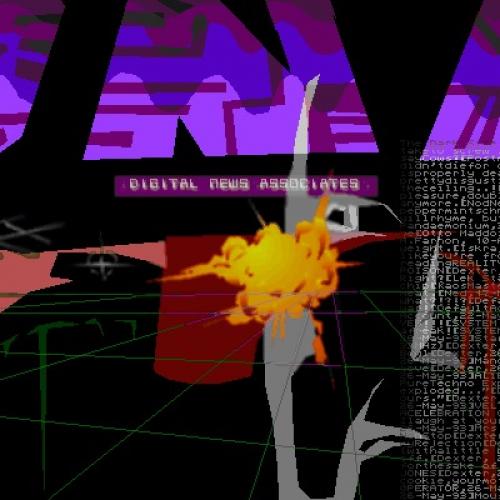Copy Link
Add to Bookmark
Report
Anarchy n Explosives 06

ANARCHY 'N' EXPLOSIVES - VOLUME #6
==================================
by Doctor Dissector, 6/14/89
Well, this is the sixth, infamous, release of Anarchy n' Explosives...
Previously, I did not place my name on the issues 0-5, but for credits sake, I
decided to place my name on each issue from here on. Anyway, this document is
to be placed into the public domain, but might be originating from some Elite
BBS's and other organizations such as Forgotten Realms at (xxx)xxx-xxxx and
other groups associated with that BBS. And, since it is a public document, the
author assumes no responsibility of misuse by irresponsible or ignorant
parties, who may directly, or indirectly, gain injury to themselves or others,
with the information contained in this document. Allright,,, enough of the
shit, lets get down to business!
WARNING: THE FOLLOWING INFORMATION CAN INJURY OR DEATH UPON ITS MISUSE. AUTHOR
ASSUMES NO RESPONSIBILITY FOR ANY DAMAGES, PROPERTY OR BODILY, FROM ACTIONS
DUE TO THIS DOCUMENT. PLEASE HANDLE WITH CARE, AND USE AT YOUR OWN RISK!!
Ok, now we can rock! This issue, #6, will deal with the basic
pyrotechnical devices, which might be enhanced by or an addition to other
anarchy projects you have or were covered in previous issues of ANARCHY 'N'
EXPLOSIVES. The items covered will include srally rockets, serpents, smokes,
whistling fireworks
and colored flames. Each section will cover, in detail,
several aspects as well as the preparation of each project. Enjoy....
SKY ROCKETS
------------------------------------------------------------------------------
Next to the Roman Candle, these are perhaps the most popular articles of the
pyrotechnical craft and, on good authority, apparently antedate the candle. So
much has been written about sky rockets that any detailed description would be
superfluous. The French, particularly, have left a most complete history,
sometimes amusing, in view of the present status of rocket manufacture. The
rocket consists of a tube of paper rammed with suitable composition, its lower
end choked to about one-third of the diameter of its bore, and having a hollow
center extending upward through the composition to about 3/4 of an inch of the
top. A stick attached to the tube serves to balance it while ascending.
Roughly, the composition of a rocket, that is, the portion of it that is
burning while it is ascending, should be seven times its diameter in length.
Six-sevenths is pierced through the center while one-seventh is solid and acts
as a fuse to communicate the fire to the heading when the rocket reaches the
highest point of its flight.
The tube is made of strong paper, preferably 3 turns of hardware paper on
the inside with 4 or more turns of straw board or Kraft paper on the outside.
A good rocket case can also be made of heavy rag or building paper, if it is
properly rolled with good paste. The process of choking the case and ramming
in a mold has been practically discontinued. An average model for a 1 pound
rocket is given in the file "ROCKET.ANS" (ANSI graphics format).
Good rockets should be uniform, all those of one caliber ascending to the
same height and bursting at about the same time. This is particularly
desirable in bouquets of 100 or more, fired simultaneously, or a straggling
effect is produced.
Most rockets larger than 3 ounces are rammed singly or by gang rammers,
which can be built on a custom basis. Today, hydraulic rammers are also in use.
For very large rockets, a scoop of clay is shaken in and rammed with
eight good blows of a mallet on the longest rammer. Then, a scoopful of
composition is rammed with about eight lighter blows. This is repeated until
the case is filled to about 1 inch from the top. Shift rammer as it becomes
necessary to use shorter ones. There should be 1 inch of solid composition
above the top end of the spindle. Now the final charge of clay is put in and
the hollow pin rammer is used. This sets the clay while leaving an opening for
the fire to reach the heading. Care must be used to see that the hollow tube
just pierces the clay. If it does not go through, the heading will fail to
fire; if it goes too far, the heading will fire prematurely. (The heading is
the blast charge or whatever you want to ignite) the following are good
compositions for rockets of the different sizes given: (given in weighted
parts)
1-3 ounces 4-8 ounces 1-3 pounds 4-8 pounds
Potassium Nitrate 18 16 16 18
Mixed Coal 10 9 12 12
Sulfur 3 4 3 3
If rockets burst before ascending, add more coal; if they ascend too
slowly, add more Potassium Nitrate. For the smaller sizes, use fine coal, for
larger, coarser in proportion to the diameter. In 4-8 pound rockets, use
partly granulated Potassium Nitrate.
SERPENTS
------------------------------------------------------------------------------
The eggs for producing this remarkable article consists of small pelletLE Ont aulfocyanide (thiocyanate) of mercury which has the remarkable property of
swelling 25-50 times its original size when lighted, producing a ling, snake-
like ash. To prepare it, make a concentrated solution of mercuric chloride and
add, little by little, a solution of potassium sulfocyanide, stirring
constantly. A grayish precipitate will be formed, and when the last addition
nt aulfocyanide no longer produces cloudiness, permit the mixture to settle.
Drain the supernatant liquid off as much as possible, remove the precipitate
to a filter paper, placed in a glass funnel, and wash slightly. When it is
thoroughly dried, reduce it to a fine powder. When ready to for the eggs,
moisten the composition very sparingly with a weak solution of gum arabic
which may be added a pinch of potassium nitrate and, made into cones, by
ramming. However, this product is poisonous to man and other living species,
since it is composed of cyanide and mercury. Thus, another formula has been
devised to accommodate safety.
A safer version of the above serpent can be made of the following:
Naphtha pitch (10), Linseed oil (2), Fuming nitric acid (7), and Picric acid
(3 1/2). Reduce the pitch to a fine powder; add linseed oil and mix well in a
mortar. Add the fuming nitric acid, always a little at a time, Allow to cool
for 1 hour. Wash several times with water, the last time allowing the mass to
stand in the water for several hours. Dry thoroughly; powder finely and add
picric acid, rubbing it in well. Moisten with gum arabic water and form into
pelletL about the size of a #4 star.
SMOKES
------------------------------------------------------------------------------
This branch of pyrotechny seems to have been somewhat overlooked, though
its possibilities for daylight entertainment as a supplement of night displays
could open an interesting field for those with enough imagination to develop
it.
There are as many colors and tints of smoke as there are flames and
aerial combinations. The simplest form of the smoke used in pyrotechny is the
smoke pot, as used in spectacles like THE LAST DAYS OF POMPEII and BURNING OF
ROME, where it is desired to give the effect of destruction by fire. Smoke and
spark posts consist of short cases about 4-6 inches in diameter and 6-12
inches in length. A basic formula subject to variation is:
Smoke 1 Smoke 2 Spark 1 White
Potassium Nitrate 4 6 --- 12
Lampblack 1 --- --- ---
Fine Charcoal 1 --- 1 1
Realgar 1 --- --- ---
Rosin 1 --- --- ---
Sulfur --- 1 1/4 --- 16
Antimony Sulfide --- 1 --- ---
Meal Powder --- 1 2 ---
Sawdust --- --- 1 ---
WHISTLING FIREWORKS
------------------------------------------------------------------------------
The peculiar property of picrate of whistling while burning has been
known for a long time. You can manufacture whistling fireworks using this
substance. In a porcelain receptacle, dissolve 1 pound of picric acid in the
least possible quantity of boiling water; add 1/4 pound of potassium
carbonate, a little at a time, stirring continuously. When effervescence has
subsided, add 1 pound of powdered potassium nitrate. Stir thoroughly, allow to
stand for an hour and then place it on a heavy piece of filter paper in a
glass funnel, to drain. When it is dry, crush to a fine powder with a wooden
roller.
Although this is a reasonably safe composition, only small quantities
should be handled at a time, as an explosion will cause disastrous result, or
will they? heh heh. The dry powder may be rammed into tubes from 1/4 to 3/4
inches in diameter, and will produce the whistling sound when burned. Bamboo
tubes are most effective.
Owing to the ease with which potassium picrate detonates, whistles cannot
be use in shells, but small tubes, 1/4 inches in diameter and 2 1/2 inches
long, when charged with the above composition, may be placed in the heads of
rockets or fastened to the outside and arranged to burn while the rocket is
ascending. Attached to wheels, they are quite amusing, but the most effective
use for them is in a series of six or eight, ranging in size from 1/4 to 3/4
inches in diameter, set side by side like a Pandean pipe and burned
simultaneously.
A non--picrate whistle, safer than the one above, is made from potassium
chlorate (3), and Gallic acid (1). This composition makes a very good whistle
---------------------------------------
ANARCHY 'N' EXPLOSIVES - VOLUME 7















